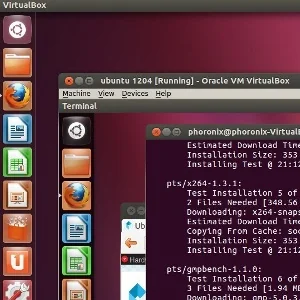QEMU's EDID Support Coming Together, Allowing For Eventual HiDPI Support

EDID support within QEMU will be useful for being able to sanely express preferred video modes / resolutions, monitor details, and related bits supported by EDID in an effective manner and allowing for plumbing in other features like HiDPI support.
QEMU 3.1 has initial EDID generator code albeit disabled by default while for the upcoming QEMU 4.0 there is EDID support planned for VirtIO-GPU and other improvements. In QEMU 4.0 it looks like the EDID support will still be disabled by default but can be enabled via the edid=on option but if all goes well could become the default in QEMU 4.1.
The Linux 5.0 kernel release brought EDID support to the VirtIO-GPU protocol, the VFIO MDEV interface for vGPUs added EDID support, and the DRM Bochs and VirtIO-GPU drivers also added their kernel side bits. Moving forward, Intel is working towards supporting EDID within their GVT code.
Long story short, while in flux still, the EDID support for QEMU is coming together as the building blocks for future display improvements for those using desktop virtualization. Details on the effort can be found via this blog post by developer Gerd Hoffmann.
12 Comments

